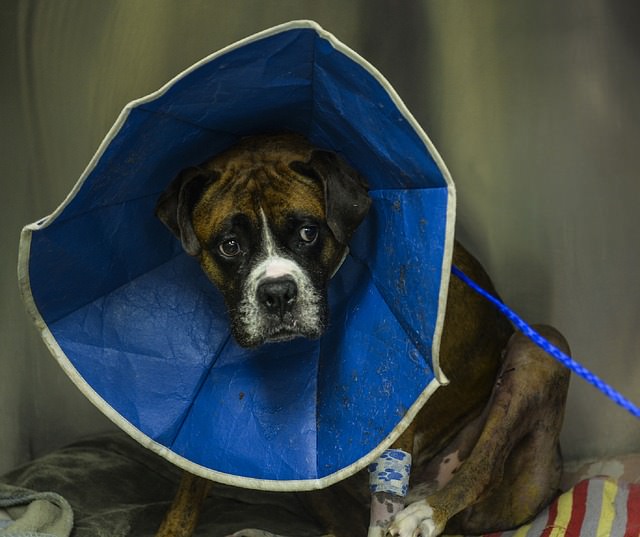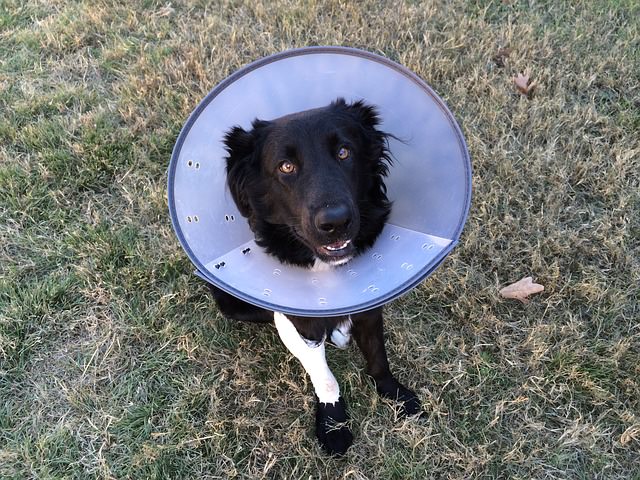An E-collar, short for Elizabethan collar, is a device used to prevent self-mutilation in animal patients. An animal’s instinct drives him to lick and rub in response to the itchy feeling associated with healing and can delay (or prevent) complete recovery. Some people believe that licking wounds is a natural and beneficial reaction, but it actually disrupts the healing process and impregnates the wound with bacteria.

People think pets seem emotionally bothered by an Elizabethan collar. It seems cruel to apply one. Don’t get me wrong, when my dogs have to wear them, it tugs at my heart too, but “cones of shame” are a critical medical tool in veterinary medicine. I am sure that if you asked human patients if they enjoy their crutches or back braces (or any of the other paraphernalia designed to help improve medical outcomes) they would say that they could not wait to be released from them. But humans can understand the necessity of the devices.
There are disease processes that literally cannot be effectively treated without an E-collar. I believe that ophthalmic disorders are among these. Pets really like to paw at their eyes and rub them along the floor or furniture. It is very difficult to treat many ocular issues without the humble E-collar.
Wounds and surgical post ops are other cases that require use of an E-collar. We have inflatable collars and other devices to stop mutilation, but the original plastic E-collar is the most trustworthy and stalwart standby.

If you cannot stare at your pet around the clock, never looking away or going to sleep, you can trust an E-collar to help assure a happy ending. Look at the E-collar as an affordable and low tech tool to help your pet have the best outcome from an injury or surgery. Ask your vet about alternatives to the traditional e-collar if you think that your dog will not tolerate one. But let the medical staff help you with the fitting, so that your dog is not uncomfortable and the collar is able to do its job.
As the one that can rationalize the choices for your dog, help keep him safe and be strict about following your vet’s orders. If your vet has instructed you to never let your dog lick a wound, make sure that unless you are physically present and watching him closely, he is wearing his E-collar. Find a type of collar that is comfortable and effective, but do not skip this important step to complete recovery.

